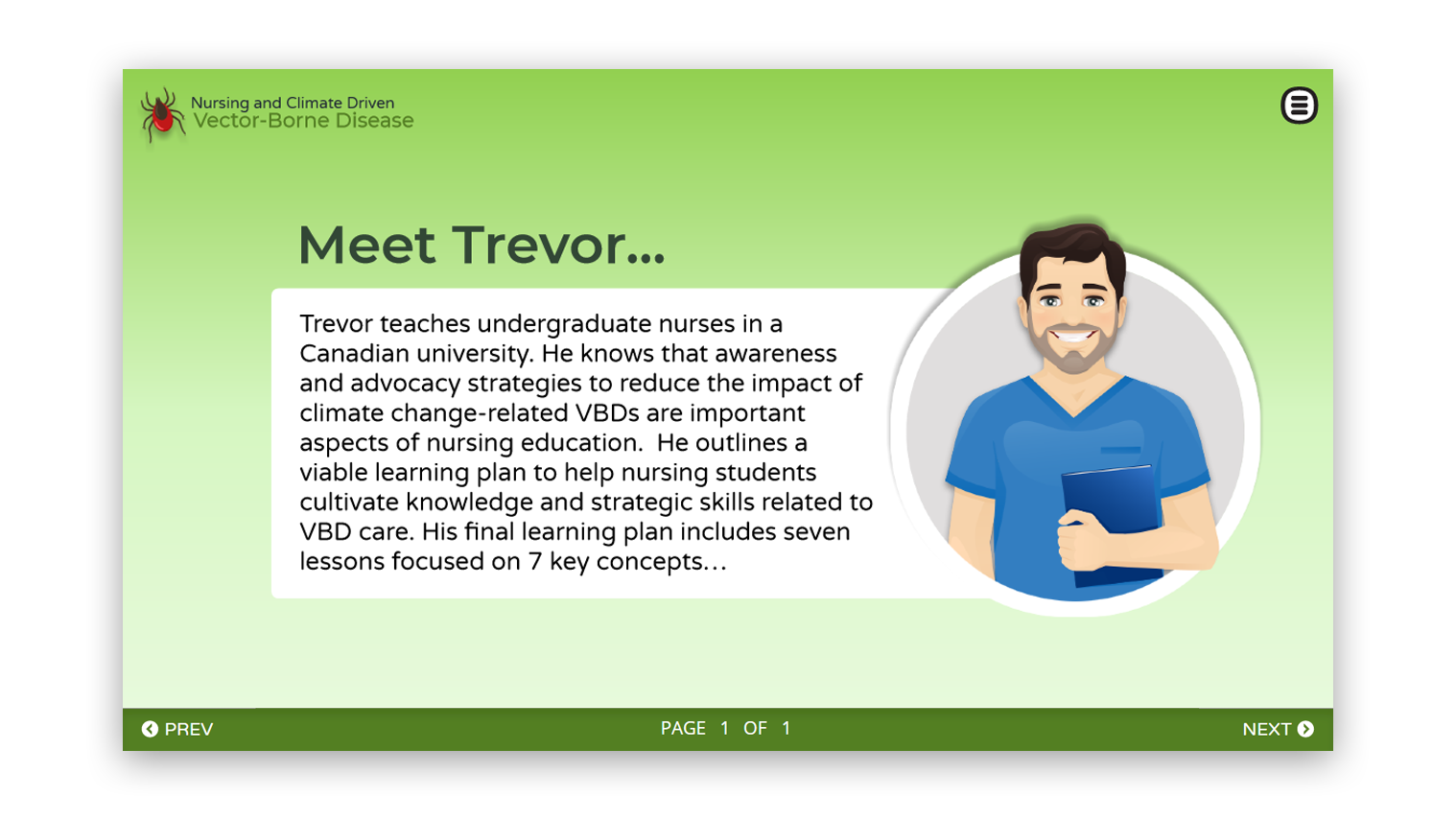
Module 5 focuses on ways that nurses can address health inequities that people may experience in accessing VBD preventive measures, treatment and/or support. This includes building culturally appropriate partnerships with people affected by VBDs and engaging in advocacy to influence decision-makers who determine VBD regulations and guidelines.
Learning outcomes for this module:
By the end of this module, the learner will be able to:
- Describe health inequities that may be faced by individuals, families, communities, and populations related to VBDs.
- Describe culturally appropriate advocacy strategies to promote equitable access to care for VBDs and address care delivery gaps.
- Understand strategies for engaging in culturally safe partnerships with affected individuals, families, communities, and populations to address VBDs.
- Reflect critically upon current regulations and public policies related to VBDs.
- Describe advocacy strategies to shape policy related to climate change and VBDs in partnership with interprofessional and intersectoral partners, and clients affected by VBD’s.
- Demonstrate awareness of nursing position statements, policies, guidelines, practice standards and processes related to the quality of VBD care.
- Understand strategies to influence decision-makers at all levels of government, and within the global context to address climate change and mitigate its adverse effects.

Module 5 focuses on ways that nurses can address health inequities that people may experience in accessing VBD preventive measures, treatment and/or support. This includes building culturally appropriate partnerships with people affected by VBDs and engaging in advocacy to influence decision-makers who determine VBD regulations and guidelines.
Learning outcomes for this module:
By the end of this module, the learner will be able to:
- Describe health inequities that may be faced by individuals, families, communities, and populations related to VBDs.
- Describe culturally appropriate advocacy strategies to promote equitable access to care for VBDs and address care delivery gaps.
- Understand strategies for engaging in culturally safe partnerships with affected individuals, families, communities, and populations to address VBDs.
- Reflect critically upon current regulations and public policies related to VBDs.
- Describe advocacy strategies to shape policy related to climate change and VBDs in partnership with interprofessional and intersectoral partners, and clients affected by VBD’s.
- Demonstrate awareness of nursing position statements, policies, guidelines, practice standards and processes related to the quality of VBD care.
- Understand strategies to influence decision-makers at all levels of government, and within the global context to address climate change and mitigate its adverse effects.

